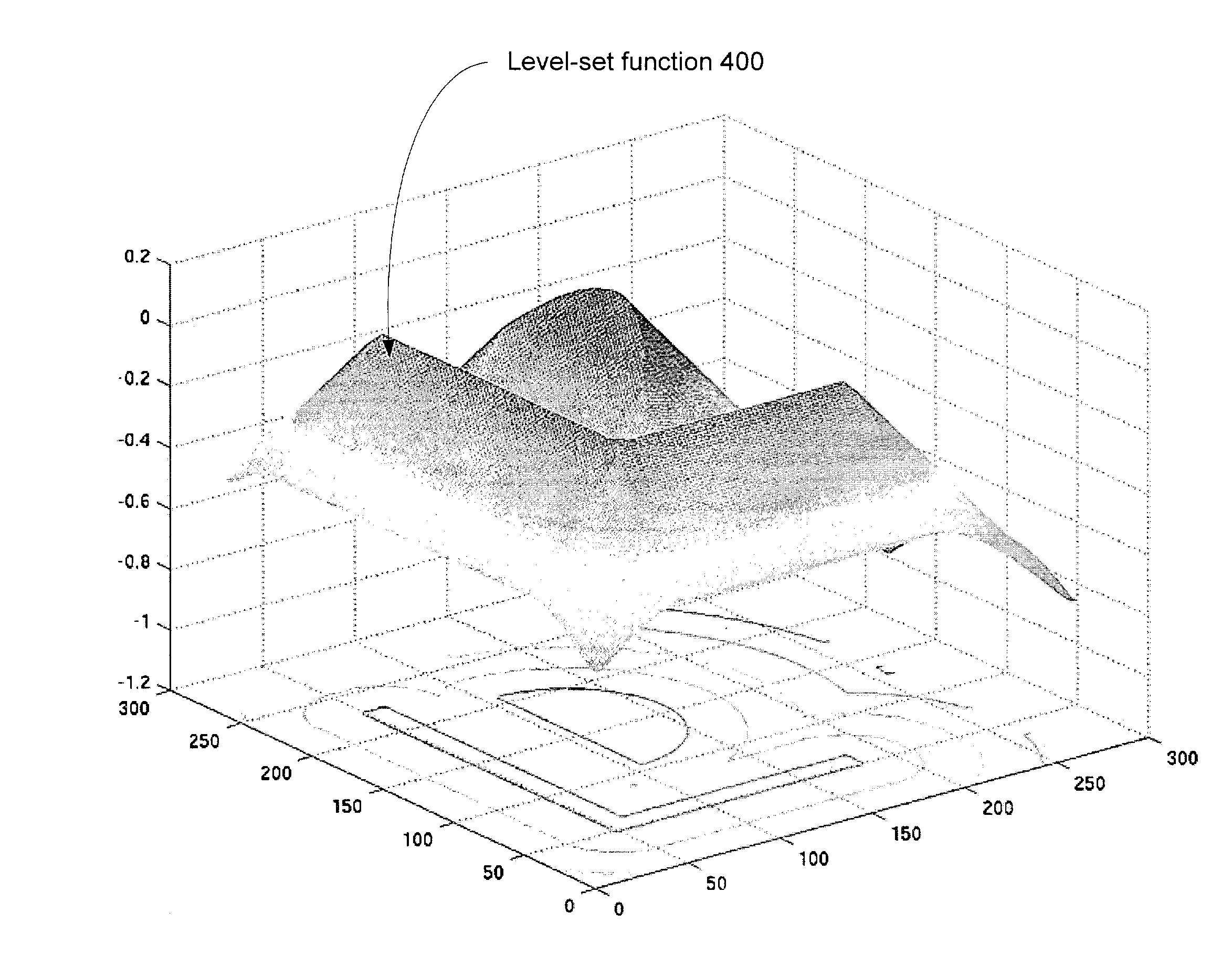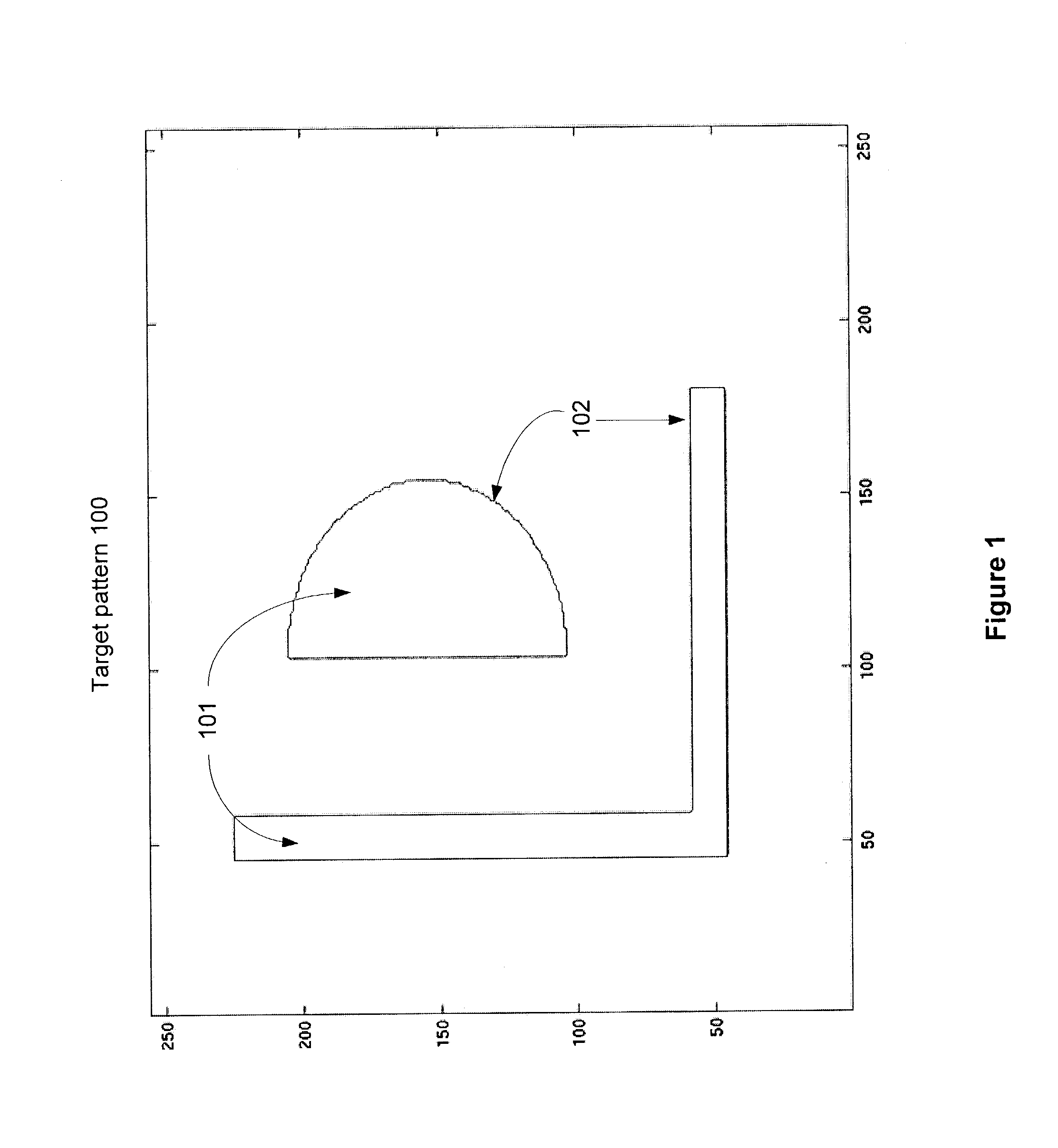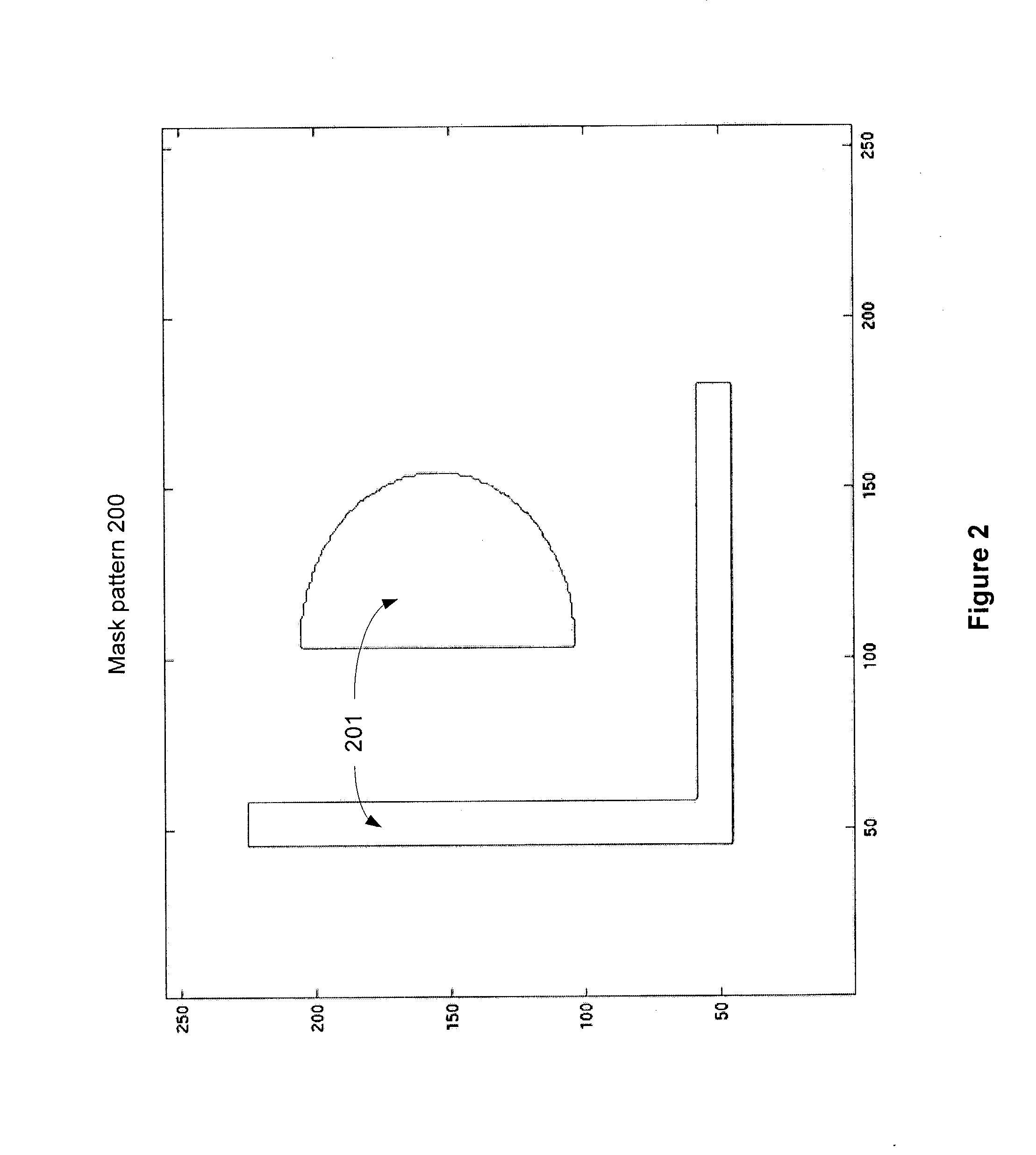Method for time-evolving rectilinear contours representing photo masks
a technology of rectilinear contours and masks, applied in the field of masks, can solve problems such as sub-optimal designs, accompanied by unwanted distortions and artifacts, and patterns that may not print correctly at all
- Summary
- Abstract
- Description
- Claims
- Application Information
AI Technical Summary
Benefits of technology
Problems solved by technology
Method used
Image
Examples
Embodiment Construction
)
[0021]As understood herein, the term “wafer pattern” is understood to include any polygon (rectilinear or non-rectilinear) or other shape or pattern to be formed on a semiconductor or other material substrate, for example digital or analog circuit structures or interconnect.
[0022]FIG. 1 is a diagram illustrating an example target pattern 100 to be printed on a wafer using a photolithography process. Target pattern 100 comprises regions 101 enclosed by contours 102. Preferably, areas within regions 101 represent photoresist and the area outside regions 101 represents the absence of photoresist.
[0023]FIG. 2 is a diagram illustrating an example photomask pattern 201 in the (x, y) plane comprising regions 201 for printing a wafer pattern in a photolithography process. In a preferred embodiment, an area within a region 201 represents chrome and the area outside regions 201 represents glass on the photomask. Alternatively, an area within a region 201 represents a material other than chro...
PUM
 Login to View More
Login to View More Abstract
Description
Claims
Application Information
 Login to View More
Login to View More - R&D
- Intellectual Property
- Life Sciences
- Materials
- Tech Scout
- Unparalleled Data Quality
- Higher Quality Content
- 60% Fewer Hallucinations
Browse by: Latest US Patents, China's latest patents, Technical Efficacy Thesaurus, Application Domain, Technology Topic, Popular Technical Reports.
© 2025 PatSnap. All rights reserved.Legal|Privacy policy|Modern Slavery Act Transparency Statement|Sitemap|About US| Contact US: help@patsnap.com



